Vijay Pandey
Depth-Aware Initialization for Stable and Efficient Neural Network Training
Sep 05, 2025Abstract:In past few years, various initialization schemes have been proposed. These schemes are glorot initialization, He initialization, initialization using orthogonal matrix, random walk method for initialization. Some of these methods stress on keeping unit variance of activation and gradient propagation through the network layer. Few of these methods are independent of the depth information while some methods has considered the total network depth for better initialization. In this paper, comprehensive study has been done where depth information of each layer as well as total network is incorporated for better initialization scheme. It has also been studied that for deeper networks theoretical assumption of unit variance throughout the network does not perform well. It requires the need to increase the variance of the network from first layer activation to last layer activation. We proposed a novel way to increase the variance of the network in flexible manner, which incorporates the information of each layer depth. Experiments shows that proposed method performs better than the existing initialization scheme.
Flight Delay Prediction using Hybrid Machine Learning Approach: A Case Study of Major Airlines in the United States
Sep 01, 2024Abstract:The aviation industry has experienced constant growth in air traffic since the deregulation of the U.S. airline industry in 1978. As a result, flight delays have become a major concern for airlines and passengers, leading to significant research on factors affecting flight delays such as departure, arrival, and total delays. Flight delays result in increased consumption of limited resources such as fuel, labor, and capital, and are expected to increase in the coming decades. To address the flight delay problem, this research proposes a hybrid approach that combines the feature of deep learning and classic machine learning techniques. In addition, several machine learning algorithms are applied on flight data to validate the results of proposed model. To measure the performance of the model, accuracy, precision, recall, and F1-score are calculated, and ROC and AUC curves are generated. The study also includes an extensive analysis of the flight data and each model to obtain insightful results for U.S. airlines.
COVID-19: post infection implications in different age groups, mechanism, diagnosis, effective prevention, treatment, and recommendations
Jun 02, 2024



Abstract:SARS-CoV-2, the highly contagious pathogen responsible for the COVID-19 pandemic, has persistent effects that begin four weeks after initial infection and last for an undetermined duration. These chronic effects are more harmful than acute ones. This review explores the long-term impact of the virus on various human organs, including the pulmonary, cardiovascular, neurological, reproductive, gastrointestinal, musculoskeletal, endocrine, and lymphoid systems, particularly in older adults. Regarding diagnosis, RT-PCR is the gold standard for detecting COVID-19, though it requires specialized equipment, skilled personnel, and considerable time to produce results. To address these limitations, artificial intelligence in imaging and microfluidics technologies offers promising alternatives for diagnosing COVID-19 efficiently. Pharmacological and non-pharmacological strategies are effective in mitigating the persistent impacts of COVID-19. These strategies enhance immunity in post-COVID-19 patients by reducing cytokine release syndrome, improving T cell response, and increasing the circulation of activated natural killer and CD8 T cells in blood and tissues. This, in turn, alleviates symptoms such as fever, nausea, fatigue, muscle weakness, and pain. Vaccines, including inactivated viral, live attenuated viral, protein subunit, viral vectored, mRNA, DNA, and nanoparticle vaccines, significantly reduce the adverse long-term effects of the virus. However, no vaccine has been reported to provide lifetime protection against COVID-19. Consequently, protective measures such as physical distancing, mask usage, and hand hygiene remain essential strategies. This review offers a comprehensive understanding of the persistent effects of COVID-19 on individuals of varying ages, along with insights into diagnosis, treatment, vaccination, and future preventative measures against the spread of SARS-CoV-2.
Ensembling Framework for Texture Extraction Techniques for Classification
Jun 08, 2022

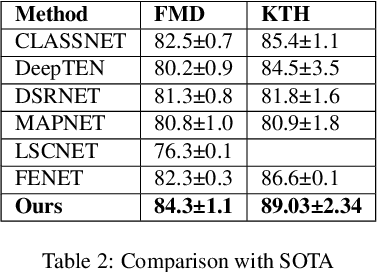
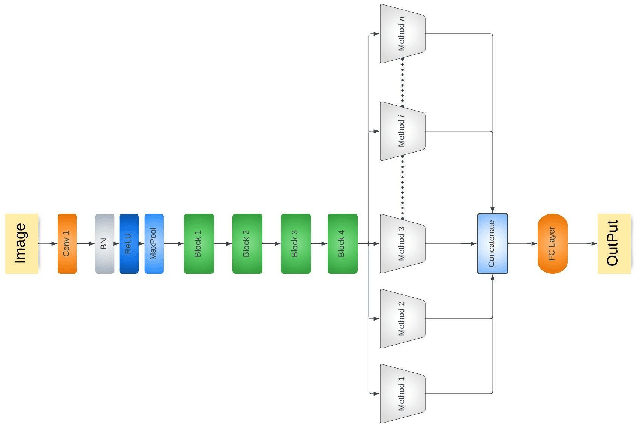
Abstract:In the past few years, texture-based classification problems have proven their significance in many domains, from industrial inspection to health-related applications. New techniques and CNN-based architectures have been developed in recent years to solve texture-based classification problems. The limitation of these approaches is that none of them claims to be the best suited for all types of textures. Each technique has its advantage over a specific texture type. To address this issue, we are proposing a framework that combines existing techniques to extract texture features and displays better results than the present ones. The proposed framework works well on the most of the texture types, and in this framework, new techniques can also be added to achieve better results than existing ones. We are also presenting the SOTA results on FMD and KTH datasets by combining three existing techniques, using the proposed framework.
Machine Learning Approaches to Real Estate Market Prediction Problem: A Case Study
Aug 22, 2020

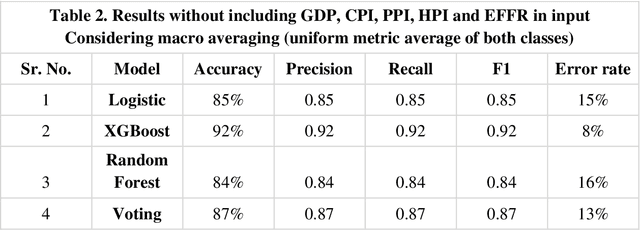

Abstract:Home sale prices are formed given the transaction actors economic interests, which include government, real estate dealers, and the general public who buy or sell properties. Generating an accurate property price prediction model is a major challenge for the real estate market. This work develops a property price classification model using a ten year actual dataset, from January 2010 to November 2019. The real estate dataset is publicly available and was retrieved from Volusia County Property Appraiser of Florida website. In addition, socio-economic factors such as Gross Domestic Product, Consumer Price Index, Producer Price Index, House Price Index, and Effective Federal Funds Rate are collected and used in the prediction model. To solve this case study problem, several powerful machine learning algorithms, namely, Logistic Regression, Random Forest, Voting Classifier, and XGBoost, are employed. They are integrated with target encoding to develop an accurate property sale price prediction model with the aim to predict whether the closing sale price is greater than or less than the listing sale price. To assess the performance of the models, the accuracy, precision, recall, classification F1 score, and error rate of the models are determined. Among the four studied machine learning algorithms, XGBoost delivers superior results and robustness of the model compared to other models. The developed model can facilitate real estate investors, mortgage lenders and financial institutions to make better informed decisions.
Binary Search and First Order Gradient Based Method for Stochastic Optimization
Jul 27, 2020



Abstract:In this paper, we present a novel stochastic optimization method, which uses the binary search technique with first order gradient based optimization method, called Binary Search Gradient Optimization (BSG) or BiGrad. In this optimization setup, a non-convex surface is treated as a set of convex surfaces. In BSG, at first, a region is defined, assuming region is convex. If region is not convex, then the algorithm leaves the region very fast and defines a new one, otherwise, it tries to converge at the optimal point of the region. In BSG, core purpose of binary search is to decide, whether region is convex or not in logarithmic time, whereas, first order gradient based method is primarily applied, to define a new region. In this paper, Adam is used as a first order gradient based method, nevertheless, other methods of this class may also be considered. In deep neural network setup, it handles the problem of vanishing and exploding gradient efficiently. We evaluate BSG on the MNIST handwritten digit, IMDB, and CIFAR10 data set, using logistic regression and deep neural networks. We produce more promising results as compared to other first order gradient based optimization methods. Furthermore, proposed algorithm generalizes significantly better on unseen data as compared to other methods.
Housing Market Prediction Problem using Different Machine Learning Algorithms: A Case Study
Jun 17, 2020

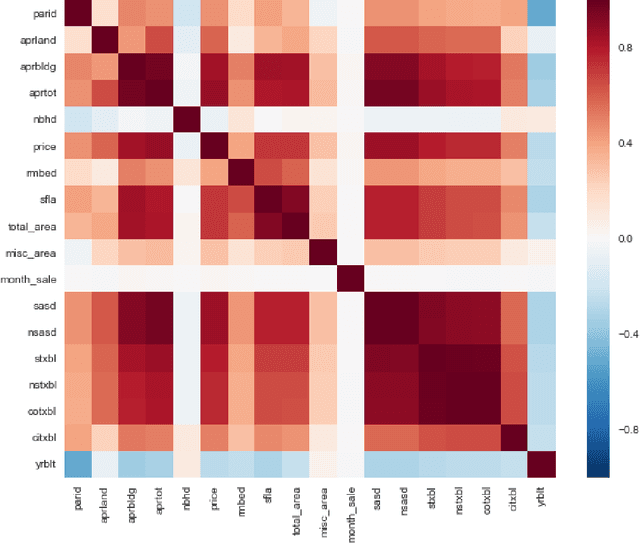

Abstract:Developing an accurate prediction model for housing prices is always needed for socio-economic development and well-being of citizens. In this paper, a diverse set of machine learning algorithms such as XGBoost, CatBoost, Random Forest, Lasso, Voting Regressor, and others, are being employed to predict the housing prices using public available datasets. The housing datasets of 62,723 records from January 2015 to November 2019 are obtained from Florida Volusia County Property Appraiser website. The records are publicly available and include the real estate or economic database, maps, and other associated information. The database is usually updated weekly according to the State of Florida regulations. Then, the housing price prediction models using machine learning techniques are developed and their regression model performances are compared. Finally, an improved housing price prediction model for assisting the housing market is proposed. Particularly, a house seller or buyer, or a real estate broker can get insight in making better-informed decisions considering the housing price prediction. The empirical results illustrate that based on prediction model performance, Coefficient of Determination (R2), Mean Square Error (MSE), Mean Absolute Error (MAE), and computational time, the XGBoost algorithm performs superior to the other models to predict the housing price.
Incorporating Image Gradients as Secondary Input Associated with Input Image to Improve the Performance of the CNN Model
Jun 05, 2020
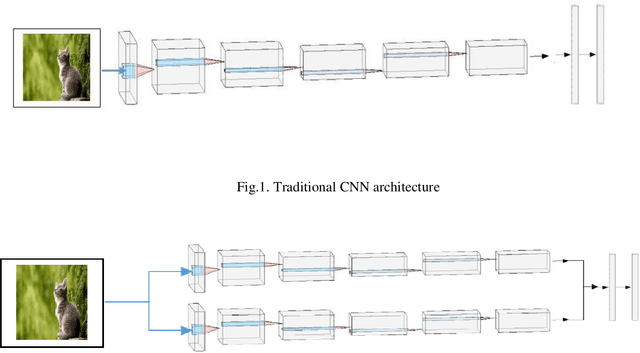


Abstract:CNN is very popular neural network architecture in modern days. It is primarily most used tool for vision related task to extract the important features from the given image. Moreover, CNN works as a filter to extract the important features using convolutional operation in distinct layers. In existing CNN architectures, to train the network on given input, only single form of given input is fed to the network. In this paper, new architecture has been proposed where given input is passed in more than one form to the network simultaneously by sharing the layers with both forms of input. We incorporate image gradient as second form of the input associated with the original input image and allowing both inputs to flow in the network using same number of parameters to improve the performance of the model for better generalization. The results of the proposed CNN architecture, applying on diverse set of datasets such as MNIST, CIFAR10 and CIFAR100 show superior result compared to the benchmark CNN architecture considering inputs in single form.
Overcoming Overfitting and Large Weight Update Problem in Linear Rectifiers: Thresholded Exponential Rectified Linear Units
Jun 04, 2020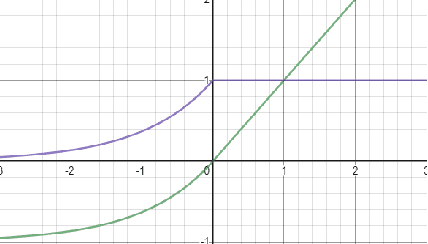

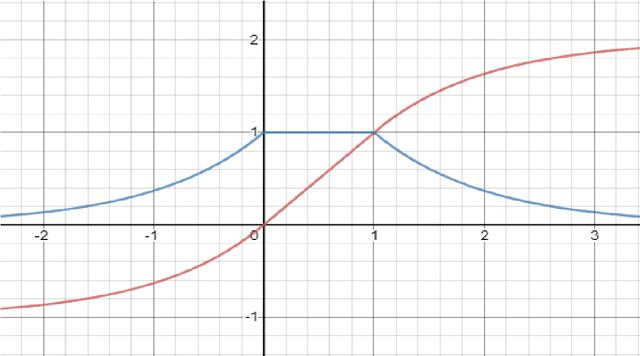

Abstract:In past few years, linear rectified unit activation functions have shown its significance in the neural networks, surpassing the performance of sigmoid activations. RELU (Nair & Hinton, 2010), ELU (Clevert et al., 2015), PRELU (He et al., 2015), LRELU (Maas et al., 2013), SRELU (Jin et al., 2016), ThresholdedRELU, all these linear rectified activation functions have its own significance over others in some aspect. Most of the time these activation functions suffer from bias shift problem due to non-zero output mean, and high weight update problem in deep complex networks due to unit gradient, which results in slower training, and high variance in model prediction respectively. In this paper, we propose, "Thresholded exponential rectified linear unit" (TERELU) activation function that works better in alleviating in overfitting: large weight update problem. Along with alleviating overfitting problem, this method also gives good amount of non-linearity as compared to other linear rectifiers. We will show better performance on the various datasets using neural networks, considering TERELU activation method compared to other activations.
 Add to Chrome
Add to Chrome Add to Firefox
Add to Firefox Add to Edge
Add to Edge